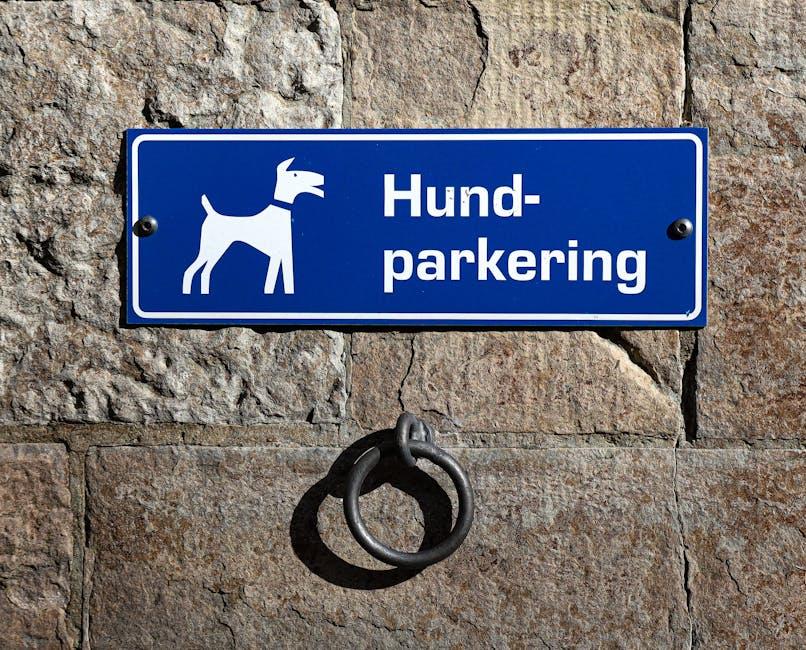When welcoming a furry friend into our homes, one of the many decisions pet owners face is determining the boundaries within which their canine companions can roam. Should dogs be granted free access to all areas of the house, or should certain spaces remain off-limits? This question often sparks a lively debate among dog lovers, as the decision can impact not only the dog’s well-being but also the harmony of the household. In this article, we will explore the various factors to consider when deciding your dog’s access within your home, including safety, cleanliness, and behavioral training. By understanding these elements, you can make an informed choice that benefits both your pet and your living environment, ensuring a happy coexistence.
Understanding Your Dogs Needs and Behavior
Determining whether your dog should have free rein of your home can depend on several factors. Dogs, much like humans, have unique personalities and needs. Before making a decision, consider your dog’s behavior, temperament, and the potential safety risks within your home. Here are some considerations to help guide your decision:
- Age and Training: Puppies and young dogs may require more supervision and limited access to prevent accidents and destructive behavior. Consider gradual access as they grow and learn.
- Temperament: Some dogs are naturally more curious and might get into trouble if left unsupervised in certain areas. Assess whether your dog is calm and well-behaved enough to explore freely.
- Safety Concerns: Evaluate each room for potential hazards such as electrical cords, small objects, or toxic plants. Ensure that all areas are safe for your pet to explore.
- Comfort and Security: Dogs often seek cozy and secure spaces. Providing them with a designated safe haven, like a crate or a specific room, can help them feel more at ease even if the rest of the house is off-limits.
Ultimately, the choice should align with your dog’s well-being and your household dynamics. Establishing boundaries can provide structure and safety, while allowing some freedom can enrich your dog’s environment and satisfy their natural curiosity.

Creating Safe and Comfortable Spaces for Your Furry Friend
When considering whether to allow your canine companion access to every nook and cranny of your home, it’s important to weigh both the needs of your pet and the dynamics of your household. Dogs thrive in environments where they feel secure and cherished, so creating spaces that reflect this is crucial. Prioritize areas where your dog can relax and feel at ease, ensuring they have a cozy bed, access to their favorite toys, and perhaps a window to gaze out of. Additionally, think about designating specific areas as ‘dog-friendly zones’ where your furry friend can enjoy more freedom without encountering potential hazards.
- Safety First: Identify any areas that might pose risks, such as kitchens or workshops, and consider using gates to restrict access.
- Comfort Zones: Create warm and inviting spots with soft bedding and blankets where your dog can unwind.
- Routine Matters: Establish consistent boundaries to help your pet understand where they are welcome, using positive reinforcement to guide them.
Ultimately, your dog’s happiness and well-being should guide your decision. By thoughtfully curating their environment, you can ensure that your home remains a haven for both you and your beloved pet.

Balancing Freedom and Boundaries in Shared Living Areas
When it comes to shared living spaces, establishing the right mix of freedom and boundaries for your furry friend is crucial. Dogs, with their curious nature, love to explore every nook and cranny. However, allowing them access to all areas of the house may not always be practical or safe. Consider these factors when deciding how much freedom to grant your canine companion:
- Safety: Identify spaces that may pose a risk, such as kitchens with hot appliances or bathrooms with toxic cleaning supplies. It might be wise to restrict access to these areas.
- Allergies and Cleanliness: Some family members or guests may have allergies. Limiting dog access to certain rooms can help maintain a cleaner environment and reduce allergens.
- Furniture and Belongings: If your dog has a tendency to chew or scratch, protecting valuable or delicate furniture is important. Consider using barriers or training to keep them away from these items.
By thoughtfully considering these aspects, you can ensure that both the humans and the dogs in your household coexist comfortably, respecting each other’s spaces while enjoying the warmth of shared living.

Guidelines for Gradually Introducing Dogs to New Areas of the Home
Introducing your furry friend to new parts of your home can be a delightful journey if done with patience and care. Start by allowing your dog to explore one room at a time, ensuring that each area is safe and comfortable for them. Begin with spaces that are less cluttered and gradually introduce them to more complex environments. This method allows your dog to adjust without feeling overwhelmed.
Consider the following tips to make the transition smoother:
- Use gates or barriers to section off areas, gradually expanding their territory as they become more comfortable.
- Supervise their exploration initially, offering gentle guidance and reassurance.
- Reward positive behavior with treats and praise to build a positive association with new spaces.
- Keep familiar items like toys or blankets in new areas to provide comfort and familiarity.
By following these guidelines, you create a nurturing environment that respects your dog’s pace and curiosity, ensuring a harmonious coexistence within your home.

